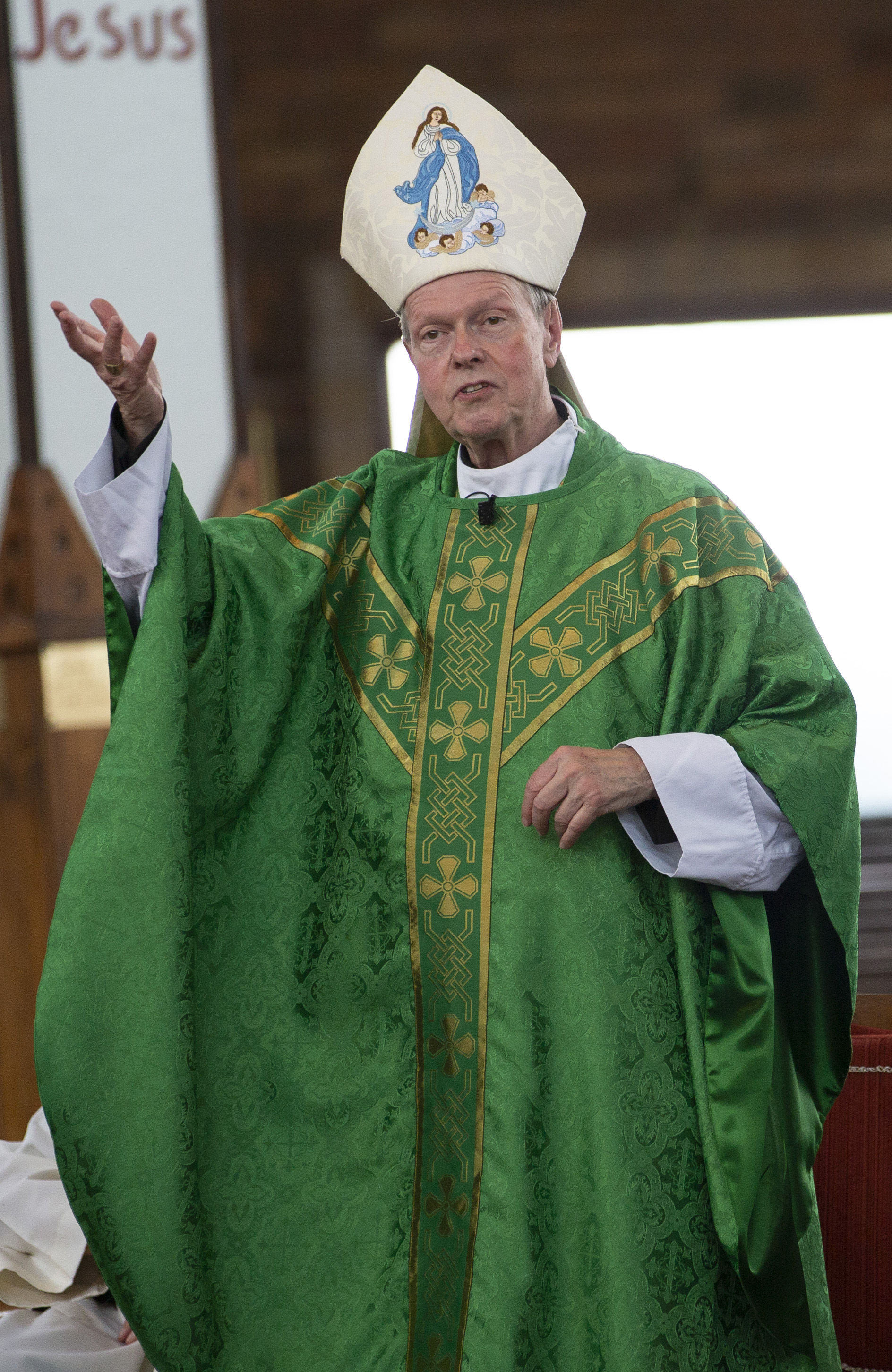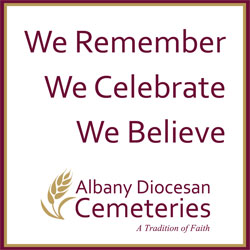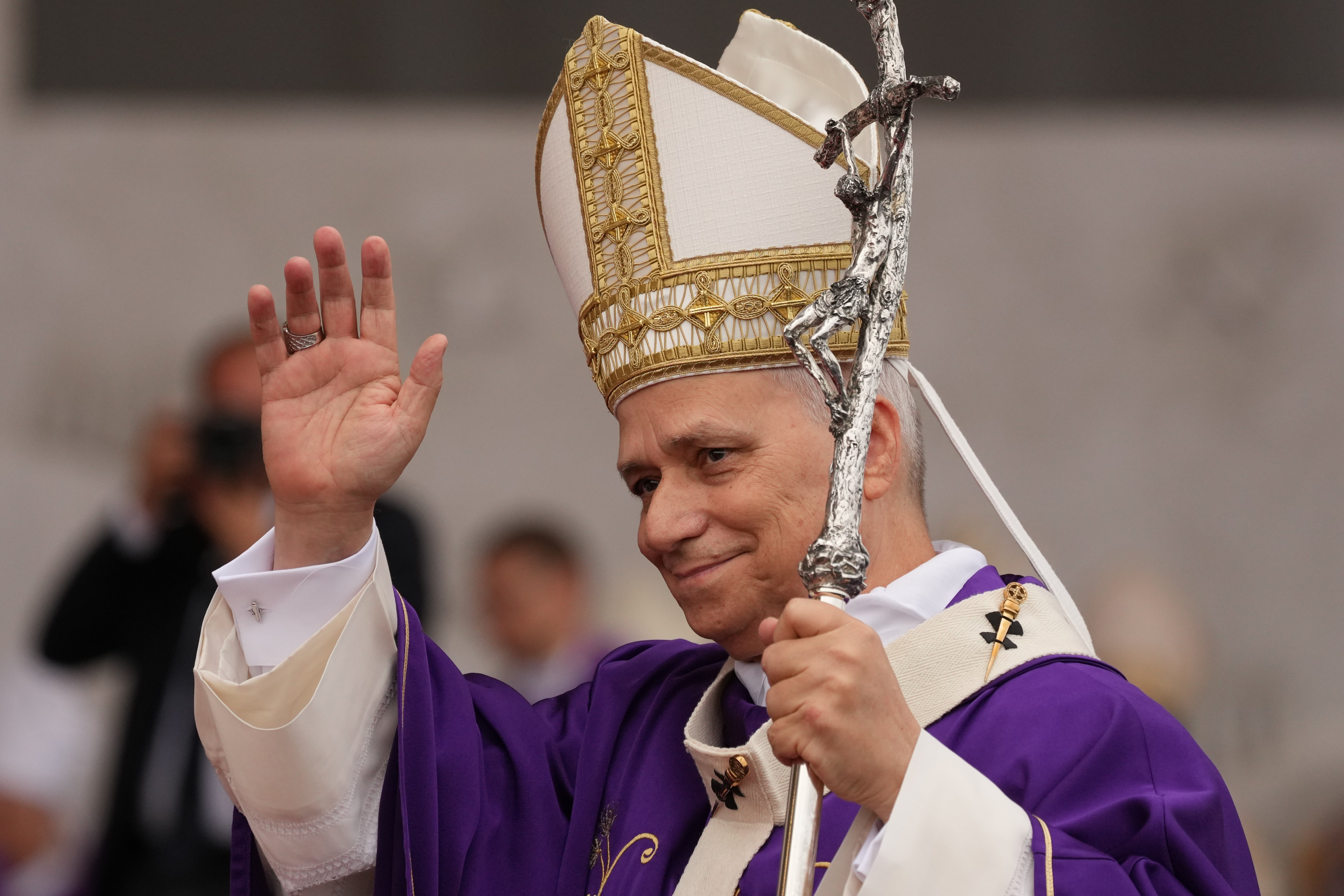April 16, 2025 at 9:07 a.m.
ADORATION OF THE CROSS
If you’ve been Catholic for at least a few years, you will be familiar with a tradition celebrated on Good Friday in churches around the world -- the adoration of the cross. But how did this tradition begin, and what does it signify for us Christians?
Before diving into the history and tradition of this important part of the Good Friday liturgy, it is important to note that there are many Catholic documents that refer to this ritual as the “veneration of the holy cross” as opposed to the “adoration of the holy cross.” The description that follows reflects the terminology in the Roman Missal as well as the U.S. Conference of Catholic Bishops, which both use the word “adoration” of the holy cross. In a like manner, when reference to the cross is made herein, the term crucifix is also implied.
The ritual of adoring the holy cross can be traced to St. Helena who, in the early fourth century, traveled from Constantinople to Jerusalem seeking to uncover the sites of Christ’s passion, especially the cross used for his crucifixion. The places where Jesus was tried, sentenced and crucified had been covered over by the Romans, even with pagan structures built on the sites. In her quest for the location where Christ was hung on a tree, Helena consulted with many locals. They told her that the key to finding the cross was to find the spot where Christ was buried because the Jews typically dug a pit nearby and then buried everything that belonged to the criminal, including the instrument of execution. Following this advice, Helena had many local sites excavated and pagan statues and buildings removed.
Eventually three crosses were found. In order to identify which of the three was the True Cross, they took the crosses to a holy woman who was ill and near death. First, they prayed for the woman, then they touched her with a part of each of the crosses. One of the crosses caused her complete healing -- the true cross. Helena sent part of the cross to Constantinople and left part in Jerusalem. She would later take pieces of the cross to Rome where it was enshrined in the church known as the Basilica of the Holy Cross in Jerusalem.
By the seventh century, the Good Friday adoration of the wood of the true cross was being carried out in Rome. The pope and others walked in procession from the Basilica of St. John Lateran to the Holy Cross Church and then, in total humility without cap or shoes, adored the wood of the cross.
As the church grew and with only a few parishes possessing fragments of the true cross, either a bare cross or a crucifix was used for the faithful to adore on Good Friday. Today a cross without a figure of Jesus crucified is not common in our churches. In fact, the General Instruction of the Roman Missal (GIRM) reads: “There is also to be a cross, with the figure of Christ crucified upon it, where it is clearly visible to the assembled congregation. It is appropriate that such a cross, which calls to mind for the faithful the saving Passion of the Lord, remain near the altar even outside of liturgical celebrations” (No. 308). Certainly, the somber and sacredness of adoring the Holy Cross on Good Friday calls to mind the saving passion of the Lord.
In the middle ages, for a time, the habit of “creeping to the cross” became popular; that is, people crawled on their knees to the cross. The highly revered St. Louis IX, King of France (r. 1226-70), is said to have crept on his knees to the cross on Good Friday -- barefoot, without his crown, dressed in a hair shirt, and his children would do the same. In 16th-century England, King Henry VIII (r. 1509-47) issued a proclamation that included veneration of the cross: “creeping to the cross, and humbling ourselves to Christ on Good Friday before the cross, and there offering unto Christ before the same, and kissing of it in memory of our redemption by Christ made upon the cross.” The practice was off again and on again until the reign of Elizabeth I (r. 1558-1603), when it was suppressed.
Good Friday is the only day of the year when the church does not celebrate the Holy Sacrifice of the Mass. On this day, we the faithful are meant to focus on the passion of Our Lord, Jesus Christ. This is the most sorrowful day known to man, the day our Savior died for us on the cross. Over 2,000 years later, Christians still gather every Good Friday afternoon around 3 p.m. to remember in a special way what happened at the Place of the Skull all those centuries ago -- how Christ, suffering and innocent, was executed by hanging on a tree.
Although churches are often packed, Good Friday is not a holy day of obligation. It is a divine service known as the Celebration of the Passion of the Lord and made up of three parts. In the first part we hear the account of the Passion from the Gospel according to St. John and participate in special, solemn intercessions. Next we adore the cross. Finally we receive Holy Communion. The most dramatic part is the adoration of the cross.
Following the reading of the Passion and the 10 intercessions, the rite of the Adoration of the Holy Cross begins with the showing of the cross. There are two forms used in showing the cross. In one form, a veiled cross is brought in procession through the church to the sanctuary where the priest removes the veil in three stages, in between chanting: "Behold the wood of the cross, on which hung the savior of the world." Those gathered respond, “Come let us adore,” then kneel and adore in silence. Three times the chanting, response and kneeling is repeated.
When unveiled, the cross is brought to a spot visible and accessible to all present, typically the entrance to the sanctuary. It may be held by two ministers. Adoration begins with each person coming forward and adoring the cross by a genuflection or other act appropriate to the local area or region. A common method of adoration is to genuflect and then kiss the cross or crucifix. A genuflection is “reserved for the most Blessed Sacrament, as well as for the Holy Cross from the solemn adoration during the liturgical celebration on Good Friday until the beginning of the Easter Vigil” (GIRM, No. 274).
In his book “A Sense of the Sacred,” James Monti references William Durandus, a 13th-century bishop in France, who believed the cross was unveiled in three stages representing the three times Christ was mocked during his trial, his sentencing and his crucifixion. “The first unveiling, revealing one arm of the cross while keeping the face of the crucifix veiled, symbolizes the mockery and blows to the face that Christ received while blindfolded in the court of the chief priest. The second unveiling, revealing the face of the crucifix, represents the mockery he received when he was crowned with thorns in the Praetorium. The third and final unveiling, completely uncovering the crucifix, symbolizes the mockery he received from passersby who, wagging their heads, blasphemed him as he hung stripped of his clothes on the Cross.”
An alternative form for showing the cross is for the priest or deacon to go to the door of the church, receive the unveiled cross and carry it in procession to the sanctuary. At the door, in the middle of the church and at the sanctuary the priest or deacon raises the cross chanting, “Behold wood of the Cross,” and the community responds with, “Come let us adore.” At the raising of the cross all kneel and adore. The cross is placed at the entrance of the sanctuary for the faithful to adore.
Each person in attendance on Good Friday is given the opportunity to adore the cross. In a letter issued by the Congregation of Divine Worship in 1988, it says “the personal veneration (adoration) of the Cross is a most important feature in this celebration” (No. 69). This letter also states, “let a cross be used that is of appropriate size and beauty. … The rite should be carried out with the splendor worthy of the mystery of our salvation” (No. 68). Although we are encouraged to adore individually, there are some places where a large cross is used and more than one person adores simultaneously. The Roman Missal permits the priest, in the event of an extensive number of adorers, to stand in front of the altar and raise the cross allowing all those present the opportunity to silently adore it.
Few events are more emotional for a Catholic than assembling with hundreds of others and in procession adoring our crucified Jesus on the cross, to see individuals genuflect, kiss his feet, watch as parents lift up their children to do the same. Despite our grief, we know that without the Crucifixion, without the instrument of salvation there is no Resurrection -- which means no eternal life for us. Every blessing, every grace, every sacrament we have results from Christ’s sacrifice on Calvary.
Indeed, we humbly come in adoration before the one who gave himself for us. We stand where Mary stood, see his wounds, the nails, his pain and we tremble as we kiss his feet trying to find a way to express our love. The mournful words of the “Stabat Mater” cross our minds: “Let me share with thee His pain, / Who for all our sins was slain, / Who for me in torments died.”
The Good Friday service, which began with the reading of the Passion of Christ, ends with Holy Communion. The Eucharist distributed on Good Friday is consecrated the night before during the Holy Thursday liturgy and then moved to the altar of repose. Following the adoration of the cross on Good Friday the consecrated hosts are returned for Communion. After Communion, the Blessed Sacrament is reverently taken out of the church to a suitable place where it remains until the Easter Vigil.
The priest then offers the final blessing; all in attendance genuflect to the cross and depart in silence, promising never again to bring such pain to Jesus. The cross remains but the altar is stripped and the whole church takes on the starkness we noted as the service began.
D. D. Emmons writes from Pennsylvania.
- ‘Joy Within His House’: An inside look into the life of cloistered nuns
- Avatar: Fire and Ash
- Washington Roundup: Trump suspends green card lottery; health care subsidies set to expire
- Catholic actor finds Christmas joy in helping US charity
- Trending: A (young) revival in the faith?
- Upcoming symposium gives nod to St. John Paul II’s ‘Letter to Women’
- Experts offer strategies for connection during Christmas amid US ‘epidemic’ of loneliness
- A new rider at the helm: Bishop Richard Moth named archbishop of Westminster
- Cardinal Pizzaballa visits Gaza City’s Holy Family Parish before Christmas
- Daughter of Jimmy Lai: Don’t let my father become a martyr for truth and for freedom








Comments:
You must login to comment.